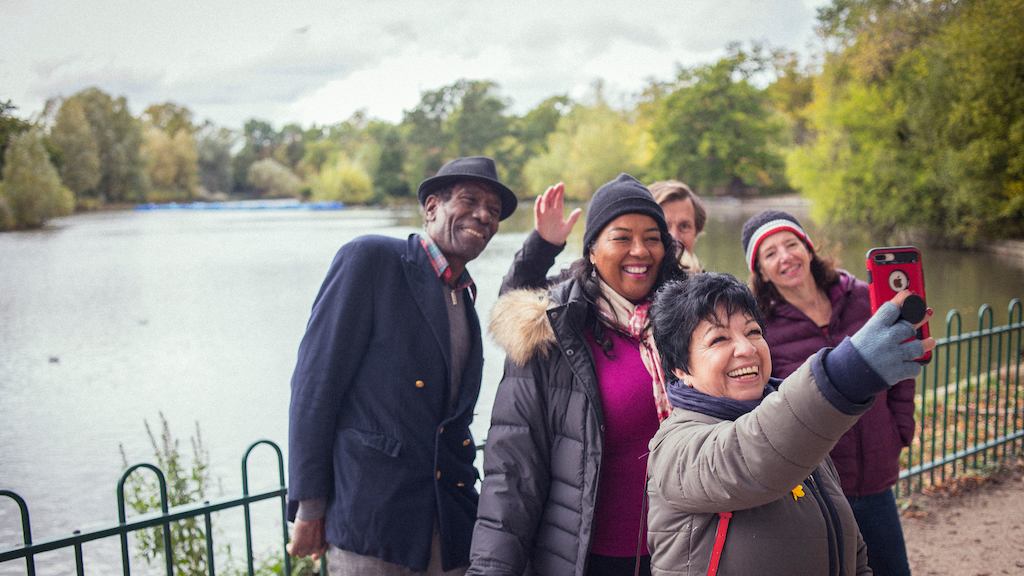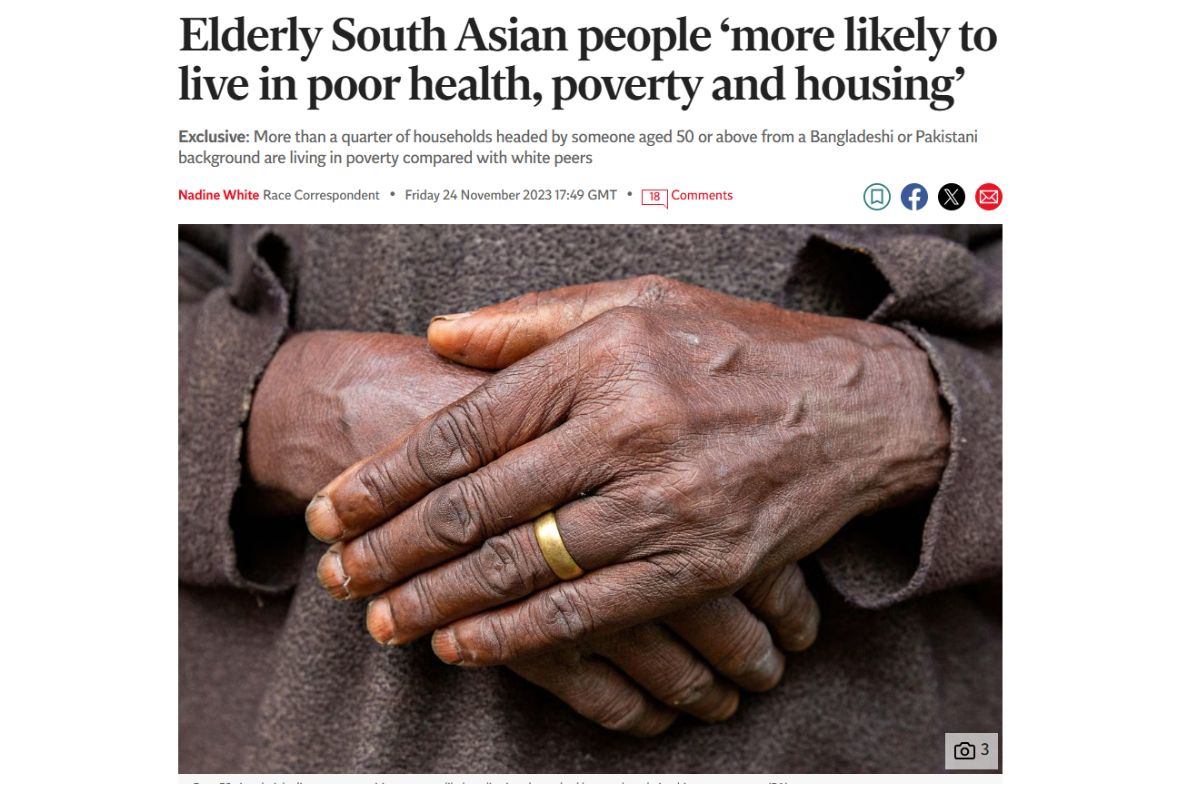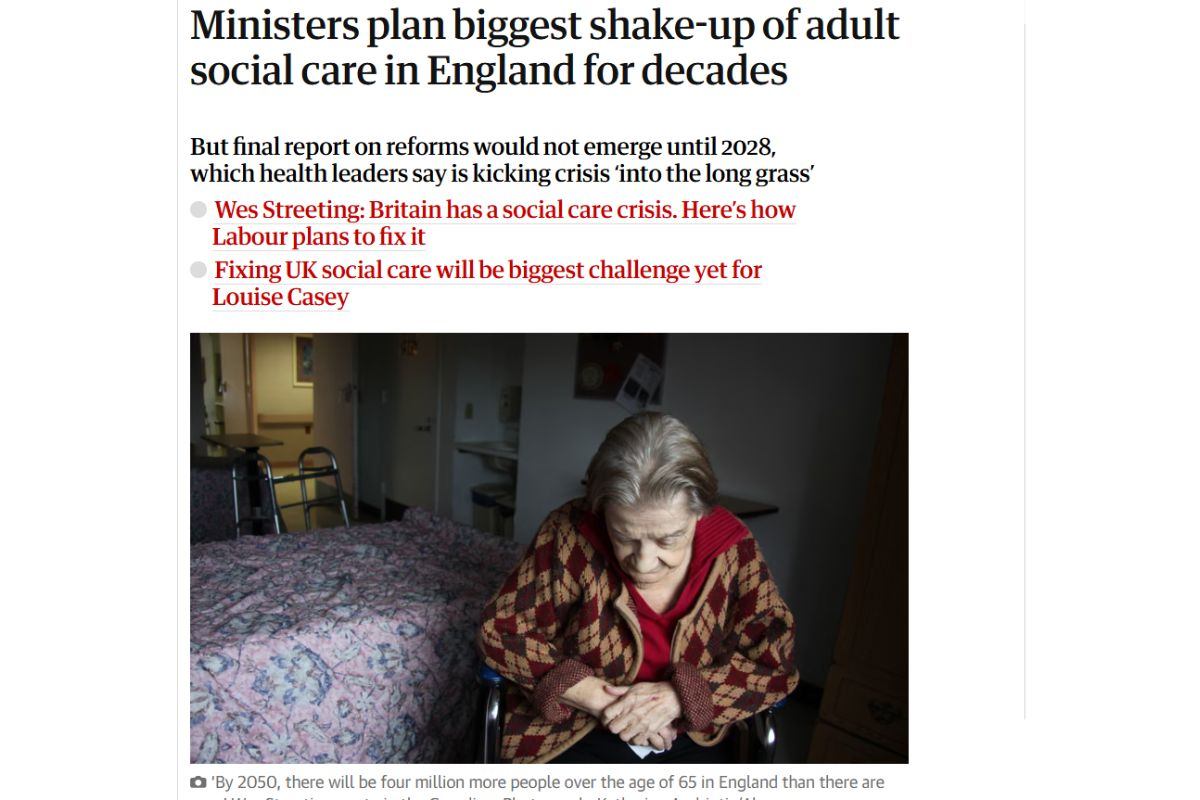Why finding the right image to depict older people really matters

This guidance will help journalists to understand the importance of the photos they use in their work in representing older people, and the risks of alienating their readership if they don’t.
The issue with current photos in the media
Much of the imagery used in newspapers and online news publications commonly reinforces negative stereotypes and misconceptions about ageing and older people (see examples below).




The link between photos in the media and ageism
Ageism is the most widespread form of discrimination in the UK (EHRC, 2018), affecting work, healthcare and how we live our lives. It is often perpetuated by what we see and hear in culture.
Images in newspapers are one of the ways in which our societal view of ageing is shaped. A recent survey indicated that depictions in the press were almost as impactful as personal interactions in shaping people’s perceptions of older people. And the depiction in much of the media is disproportionately associated with decline and ill-health with older people commonly and homogenously portrayed as frail, vulnerable and dependent.
The stock images that readers regularly see in news publications tend to be inherently negative, focusing on sad or vulnerable older people in need of help, and risks feeding into negative stereotypes of ageing and older people in wider society. Repeatedly seeing such images can have a powerful impact on people. Research has shown that ageism can affect our wellbeing by shaping how we feel about our own ageing process – limiting what we feel we are able to do.
It can be argued that one role of journalism is to highlight the polar extremes of life and so it might be necessary to use imagery which highlights the most vulnerable within our ageing population or the most extraordinary such as 90-year-olds who run marathons or perform sky dives. However, in many significant cases, it is more appropriate—and research indicates more effective—for publications to use imagery that presents older individuals in diverse, realistic, and positive ways.
Why should I use more inclusive photos of older people in my articles?
Older readers make up a significant proportion of news consumers. People aged 75 and above are twice as likely to cite newspapers (print + online) as a main platform for news than 16-24-year-olds and are almost five times more likely to identify a physical copy of a newspaper as a main source of news to them. Other studies have indicated that half of all news subscribers to print and online products are aged over 55.
And for advertisers, older consumers are increasingly the age group with their largest spending power they wish to target. Previous research has indicated that consumers over 50 account for around half of all total household consumer spending in the UK, spending more on all categories of goods and services, aside from clothing and footwear, than younger households.
Much of this age group is dissatisfied with how they are portrayed in the media they consume. Research we published last year reveals over half of people aged 50 and above believe the depiction of older people in the media and advertising is negative and stereotypical and does not reflect their lives. Repeatedly showing older people as frail or physically weak is offensive to around half of all UK adults.
In fact, in the Advertising Standards Authority's report on the Depiction of Older People in Advertising demonstrated how certain portrayals of older people in ads can be offensive and even harmful. The report, based on focus groups and a survey of over 4,000 members of the public, found that ‘Overall, there is a sense that ageing is changing and that the media, including the ad industry has not yet caught up with portraying older people in an authentic and meaningful way.’
Often these images might be selected in haste, choosing the first to hand that has been used before. But this approach is likely just doubling down on the offence perceived by much of your readership.
What do older people think?
We shared this agency image, used in scores of newspaper stories, on our social media channels.
This was people’s reaction to the image which we consider a common ageist trope which unnecessarily portrays older people as frail, feeds into negative stereotypes and dehumanises older people by reducing them to just body parts.
Of the people surveyed, 42% said using this photo would put them off buying the newspaper or clicking on the article. You can see some of their comments below.
Too often pictures that accompany articles about older adults use close ups of their hands. This "others" older adults by emphasizing physical differences (e.g., their hands are wrinkled, but younger hands are not).
The closeup of the hands also cuts off the older adult's face, which dehumaizes them. It also plays into stereotypes that all older adults are frail and passive. Aging can be vibrant!
This could have been demonstrated in a less passive photo. Agree the photo adds to the stereotype.
Rarely are images of simply/solely/only hands depicted when other groups are discussed/referenced. It's really quite odd.
What can journalists do?
We're urging journalists to consider their choices when selecting images depicting older people for their articles. Journalists have a powerful role in older people are represented, and choosing better photos is an important step towards more meaningful depiction of getting older.
We hope that in doing so, the media can play a role in changing societal perceptions and expectations around ageing and older people for the benefit of us all.
The Solution
An alternative to stereotypical photos of later life is at hand. And it is free. In 2021, the Centre for Ageing Better created the first library showing positive and realistic images of over 50s in a bid to challenge negative and stereotypical views of older age.
Simply visit the library, and search for the kind of image you want to accompany your article. We have photos of older people at work, with family, in their homes, in their communities. The photos show a more realistic depiction of ageing – to help tackle ageism and challenge the idea that all older people are frail and vulnerable.
The library, which now contains more than 4,000 images and is regularly updated, offers journalists a wide selection of images, copyright free.